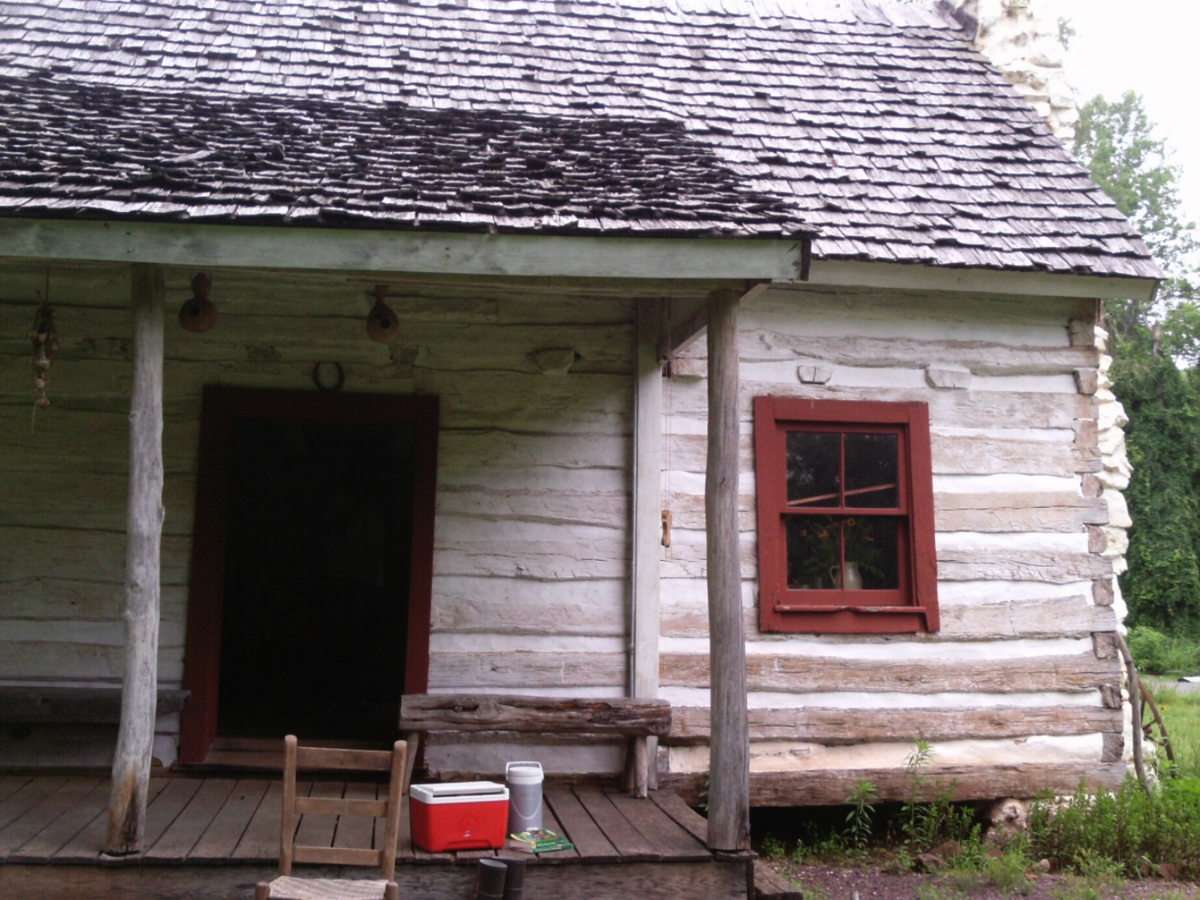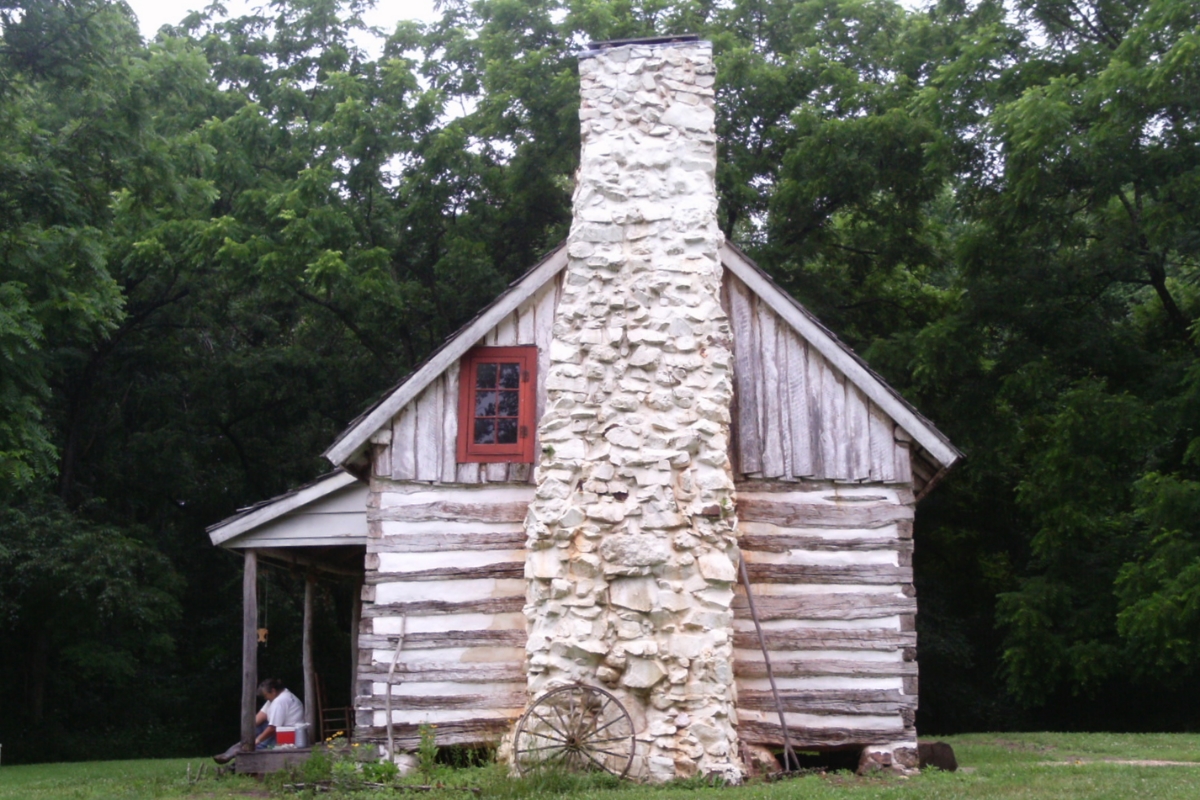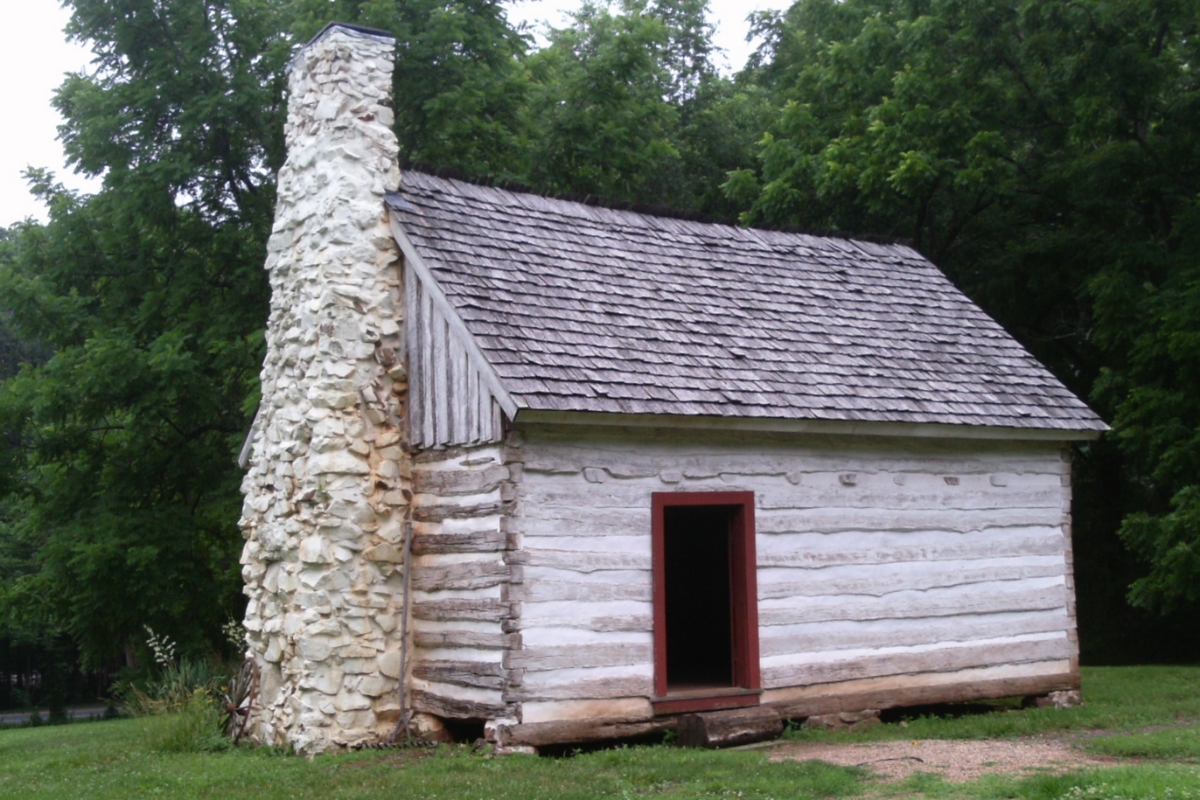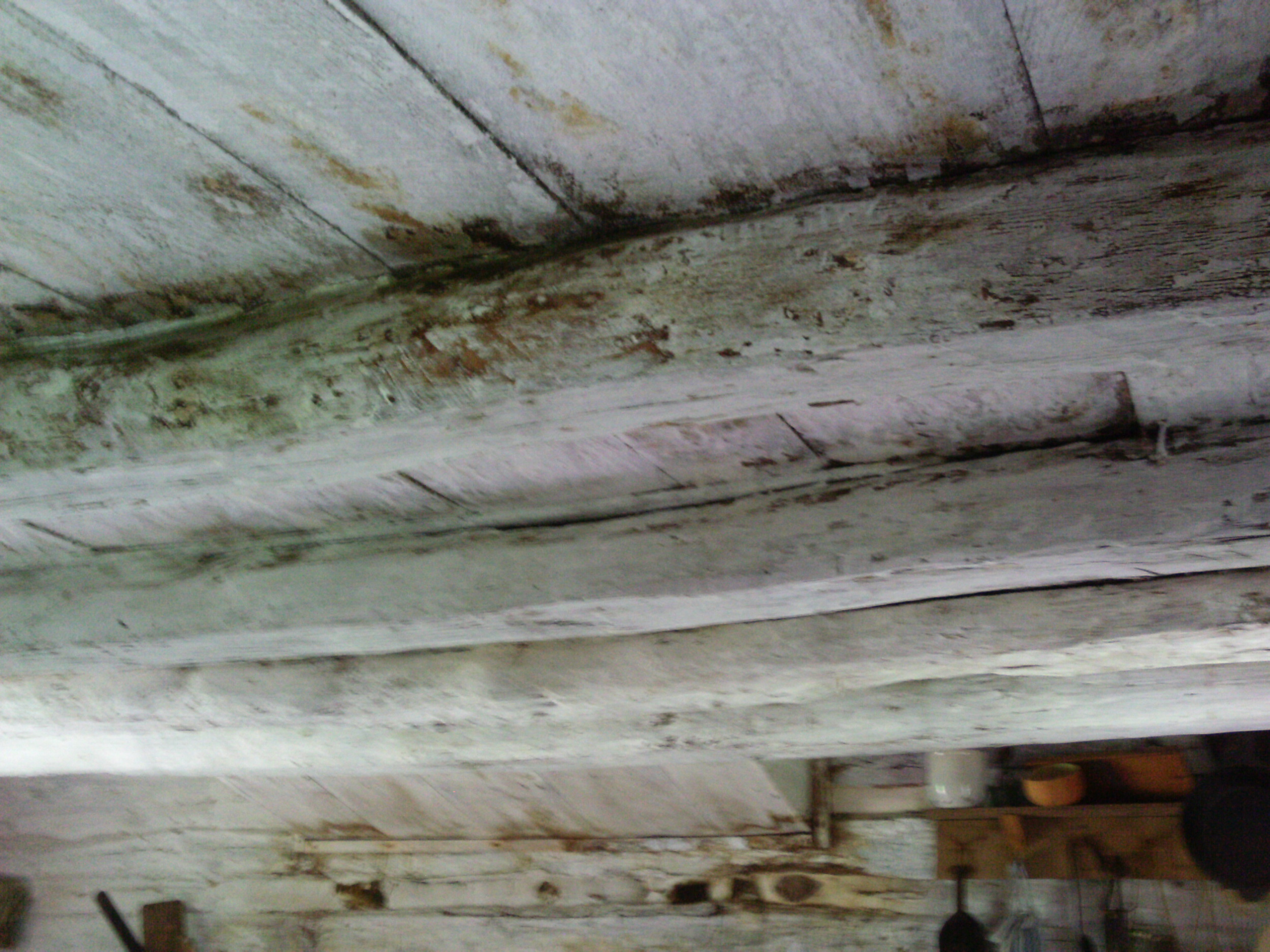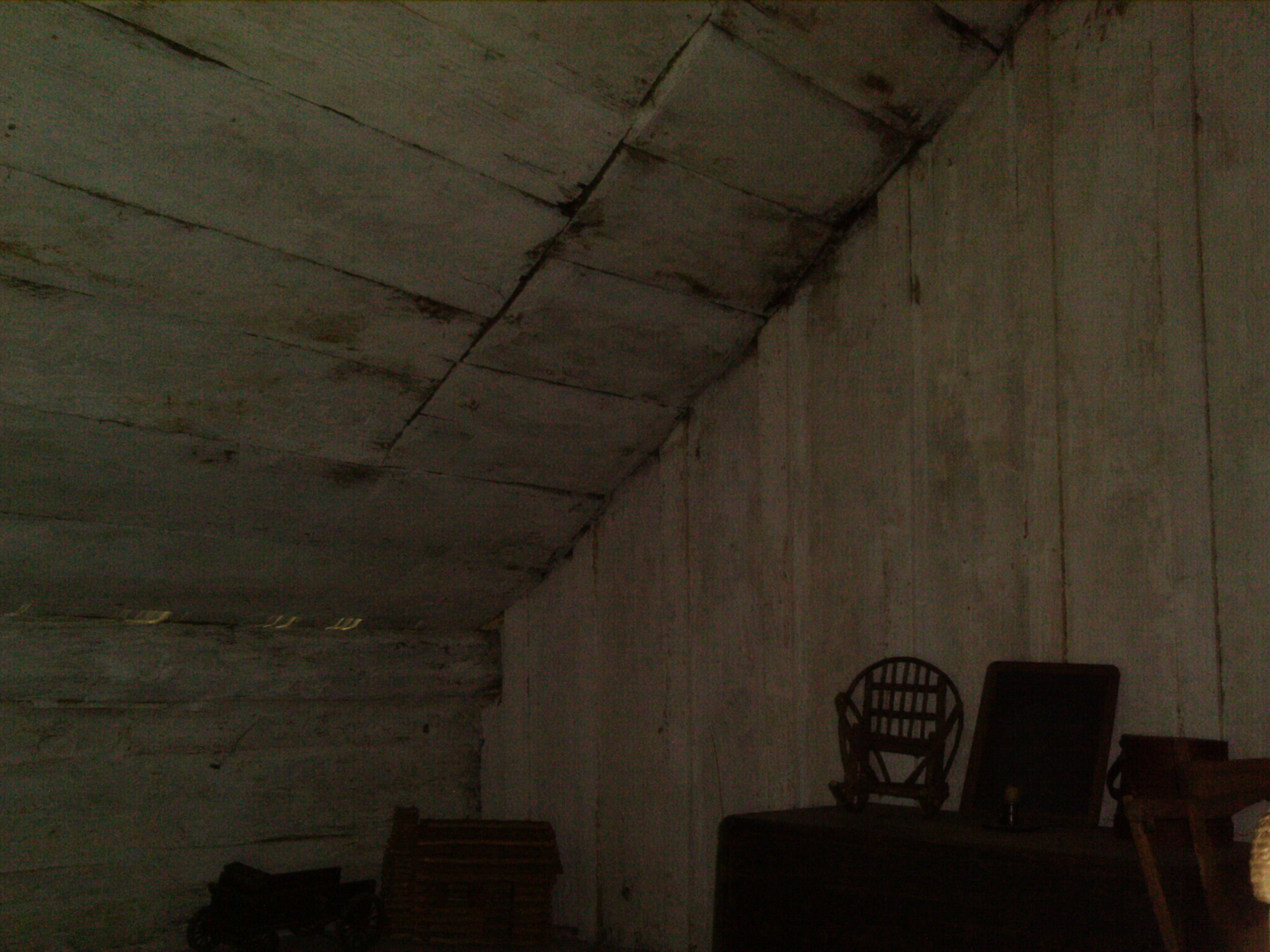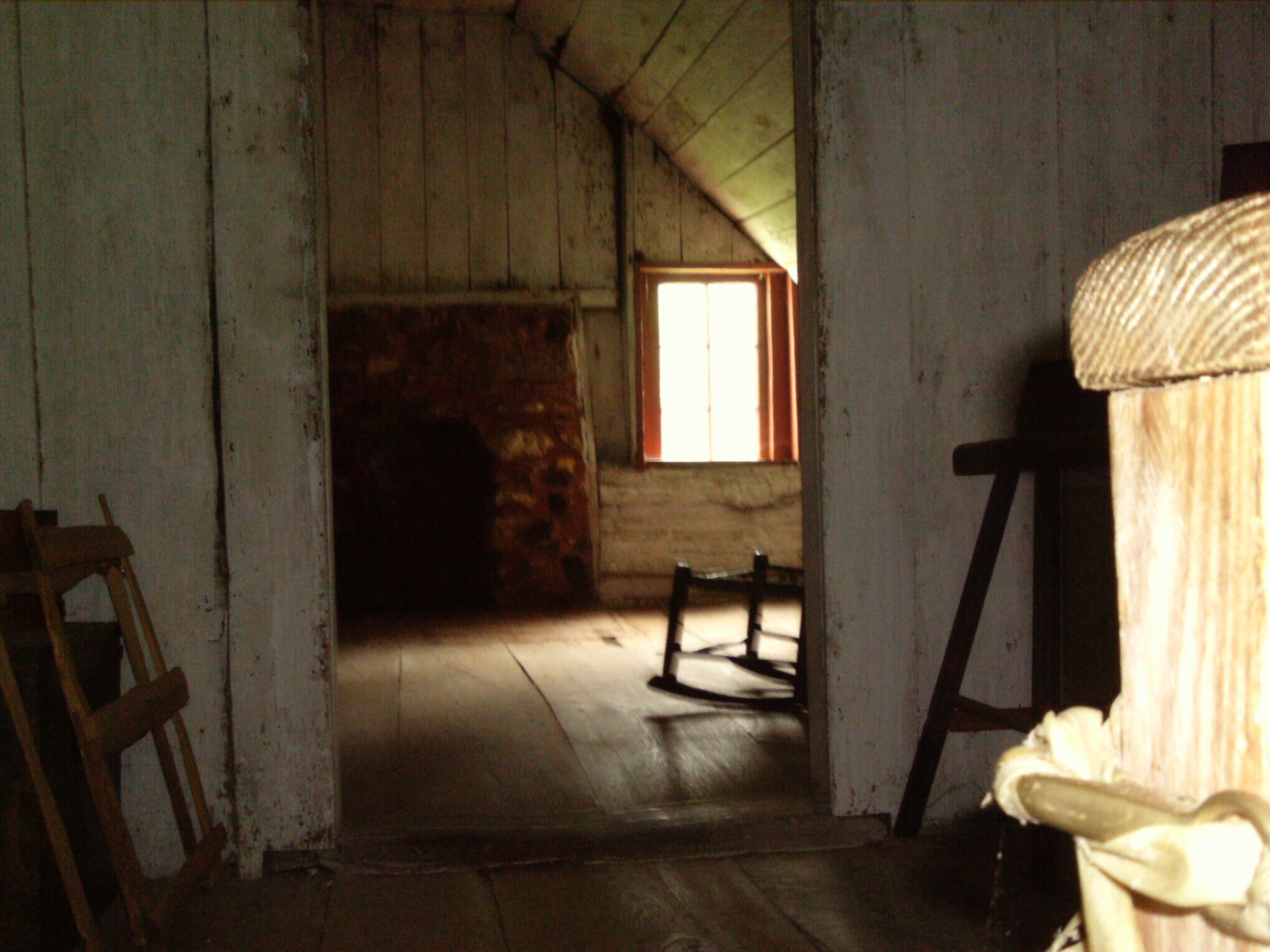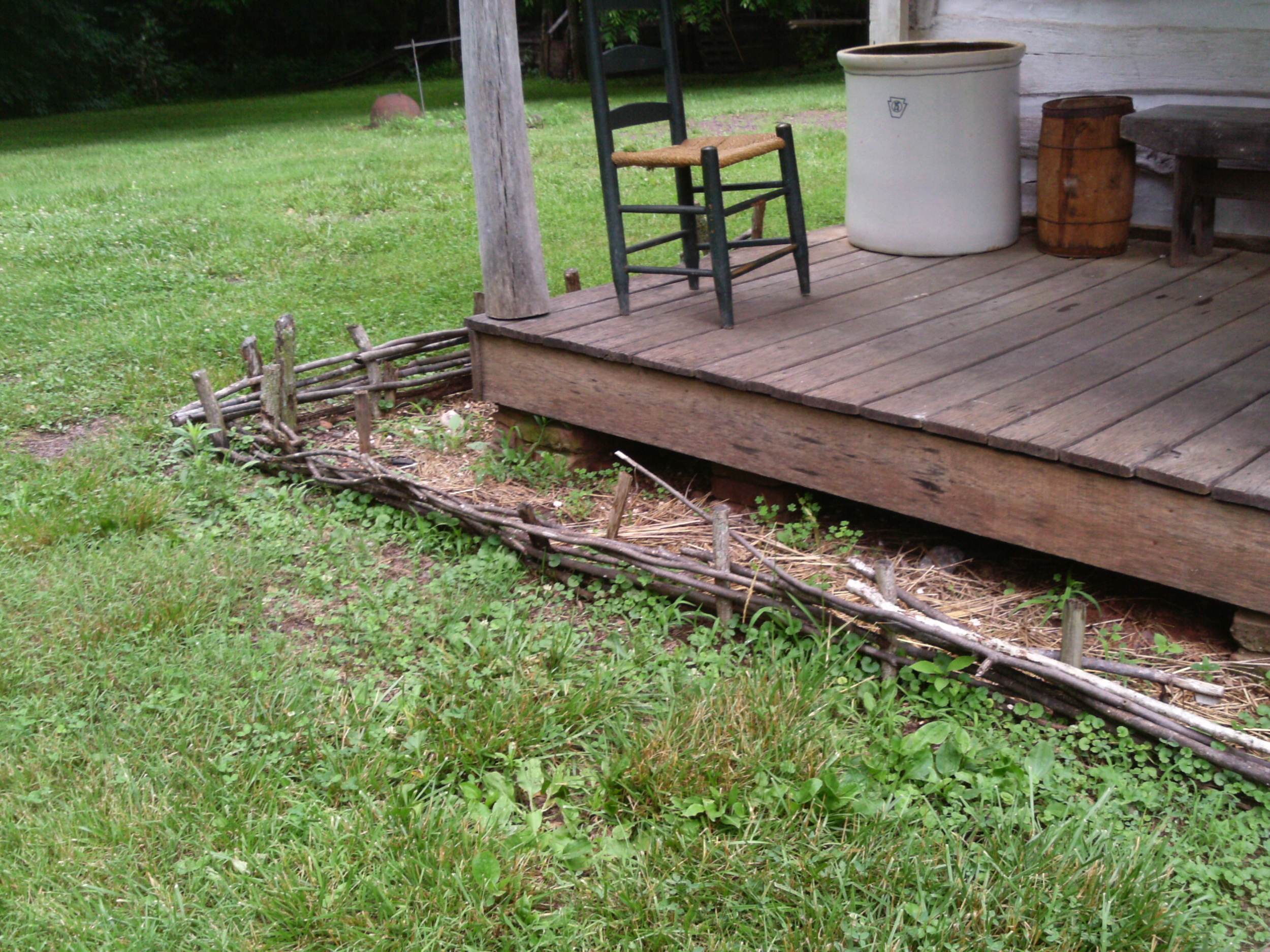Gilmore Cabin
Orange, Virginia
| Admission fee | Photography | ✓ | |
| Docent | ✓ | Gardens | ✓ |
| Audio tour | Furnishings | ✓ | |
| Tour brochure | Rebuilt | ||
| Museum shop | Primary focus | residents |
Toured June 21, 2014
Gilmore Cabin, built in 1872 by a freed slave, is one and a half stories, with one room on the first floor and two rooms on the second floor. The cabin is of note because it is the only preserved freedman’s home in the United States. To restore the cabin to its original appearance, an extension was removed and the wood floor on the first floor and the windows were replaced. The floor boards and beams for the second floor are all original except for one beam. The fireplaces and chimney are original.
Diane, our docent, is actually affiliated with an organization working on maintaining and preserving the cabin and grounds. She was very friendly and informative, mostly providing general information on the lives of freed slaves and what is known in particular about George and Polly Gilmore, the original owners. There were two or three other volunteers there the day we were visited and it is their cooler you see on the cabin’s porch. My understanding is that the cabin is staffed with a docent only on weekends.
Features. The home has been furnished with period pieces, including tables and pots and pans. The upstairs isn’t open to the public; however, tourists are allowed to climb the ladder to look into the upstairs rooms. Outside, the preservationists have surrounded the porch with low waddling fencing. There is no evidence that the Gilmores used such fencing to protect flowers or herbs from free-roaming animals; however, it is of the period.
Grounds. The cabin was part of a working farm and a hog pen and vegetable garden are maintained on the property. The remains of the foundation of the Gilmore’s original home on the site (c. 1870) can also still be seen. A short distance away in the woods are the remains of a Confederate Civil War encampment.


